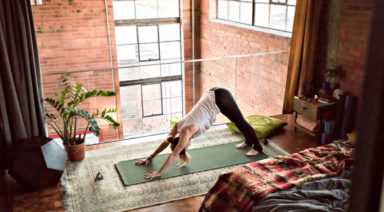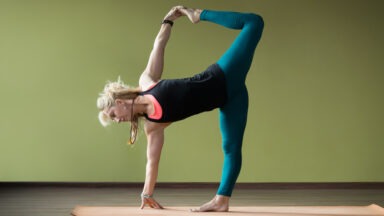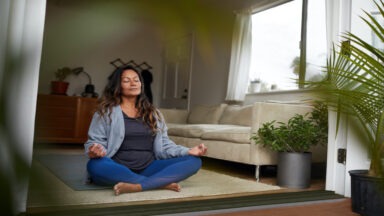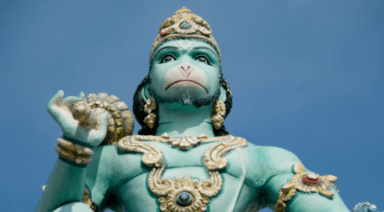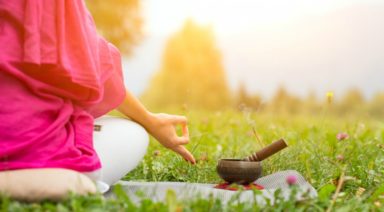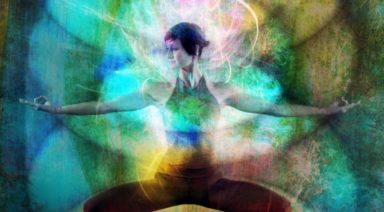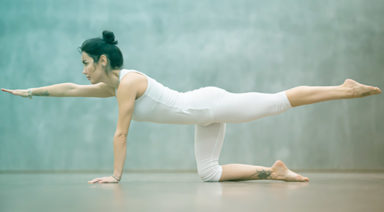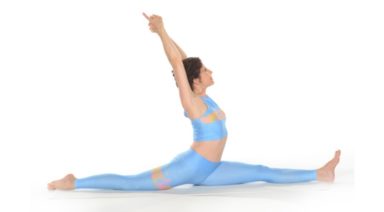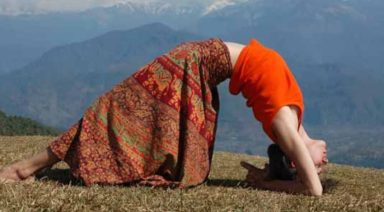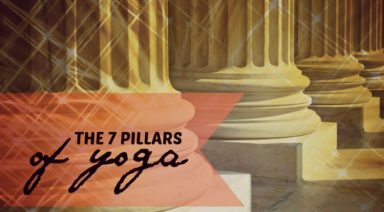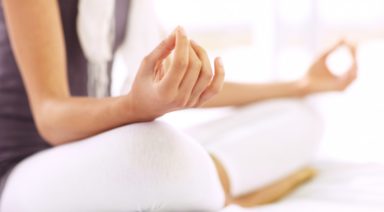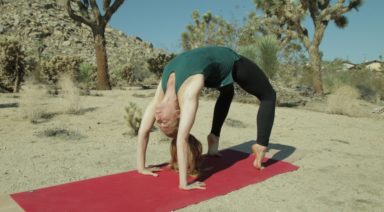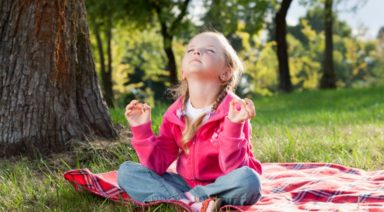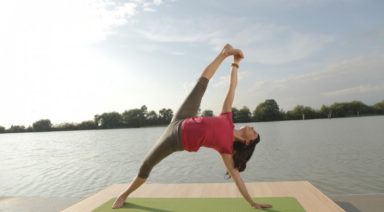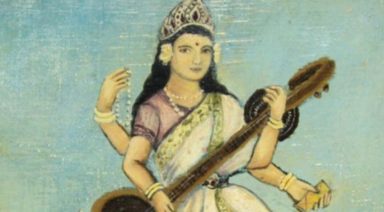11 ways to get get back into the yoga swing of things

So you’ve been wanting to try our Breakfast of Champions Challenge, but don’t know where or how to start. Maybe it’s been too long since you last dug out your mat. Maybe you had an injury and had to abstain for a bit. Maybe you’ve just been watching TV all day instead of getting up and at ‘em! Whatever your reason is, Tommy Rosen’s energizing and revitalizing video is only 20 minutes, and an amazing start to your day! But if you want to take it a step further and get back into your regular daily yoga schedule, Yoga Journal has some tips this past issue on how to do it (we threw in our GTV take, as well!):
- Accept where you are: after a long hiatus, your practice won’t be exactly the same. And that’s totally okay! The key is knowing that yourself, and making peace with it. Then get up and keep going!
- Take the long view: take a look at where you want to be and know that wherever you are now, if you are consistent, you will get there. Vinyasa and therapeutic yoga teacher Tiffany Cruikshank describes it as, “You’re starting a new relationship with your yoga practice and, in some ways, your body is totally foreign to you. You have to think of where you will be six months from now as opposed to just killing yourself and giving up.”
- No practice is too short: every minute counts! Even if you start with only a quick 5 minute series of poses, it’s still more than you did yesterday. Aim to increase it by a minute or two every day, or get in multiple sets of five minutes. It’s great to just get the discipline in of starting.
- Dedicate a space: half the battle is getting the mat out, are we right? So leave it out and ready to go. It doesn’t have to be a big space, but just in an accessible place you won’t overlook, along with all the gear you’ll need.
- Don’t overdo: it’s okay to literally ease into it. Yoga Journal suggests working 50-75% of what your old “normal” used to be, and to take it easy on the advanced poses, as your body may have lost flexibility and strength. Nothing like another injury to put the brakes on your restarted practice!
- Start fresh: maybe your last practice was part of why you stopped. You can try new classes, teachers, and forms of yoga to keep it new and non-routine. Let yourself feel like a beginner again, and you can see things from a new perspective and with a new voice.
- Take a private class: scared to be a beginner again? A private instructor may have the one-on-one patience you need to be encouraged to continue. It can be just for a few sessions, as well; whatever you need to get back in the groove and gain your confidence.
- Find a challenge: when you’re doing a challenge that has a set goal, schedule, and finite amount of time, it can be easier to achieve than simply reaching for the nebulous “Get back into yoga!” goal. Luckily, we’ve made it easy for you to start, and we also have a great community of fellow yogis that would love to keep you accountable!
- Indulge in the poses you love: positive reinforcement is a great way to motivate yourself. If you drag your feet to your yoga mat, reignite the fire! Find the passion again with the poses you enjoy! You’ll be looking forward to your next yoga-you-time before you know it.
- Try the ones you don’t love: giving yourself a goal to reach for can also be a great motivator. “Hard poses never get stale,” after all. Whatever you try, give it your best shot; no slacking!
- Deepen your connection to yourself: yoga is an extremely personal, intimate practice. Yoga Journal reminds us, “Remember that first and foremost yoga is a path toward quieting your mind.” The keys to a successful, fulfilling yoga practice is loving yourself, and aware of what’s going on internally. Don’t tune out your inner voices, and you are sure to have a great time. We hope these tips help you on your yoga journey. Now switch off the computer and hop on your mat! Namaste.
Yoga Mala
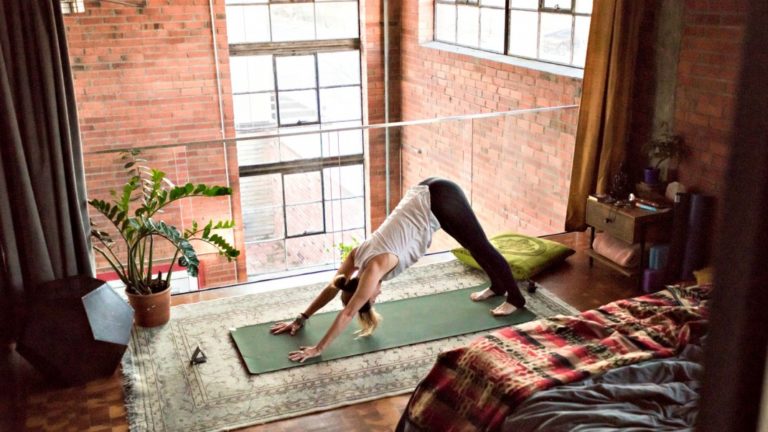
A mala, meaning garland in Sanskrit, evokes a circular, continuous form. In practice, a mala is the devoted offering of repeated cycles (typically in divisors of 108) of mantra Japa or yoga asana. Within a mala, there is always a sense of beginning, continuing, and completion. Both inside each individual cycle and in the practice as a whole. This three-form (trimurti) quality allows us to embody, in practice, the rhythmic cycles ever-present in the natural universe: creation (srishti), sustaining (sthiti) and destruction (samhara).
During a yoga mala, the types of offerings include mantra japa, pranam and yoga.
Offering: Mantra Japa
Chanting mantra, either internally or aloud, has a vibrational impact on the body and mind. A mantra, meaning a tool or skill of thought, imbues the practice of yoga with a primordial rhythm and when offered continuously (japa), mantras are designed to liberate consciousness.
“Mantras are the sounds that should accompany our yoga postures. Like strands of DNA, these sounds offer yoga practitioners a direct link to the source and substance of the yoga tradition. Just as you cannot truly grasp science without knowing its language—mathematics— it is impossible to touch upon the depth of yoga without knowledge of mantras.” ::Russill Paul, The Yoga of Sound
When preparing to practice mantra Japa, select a mantra that resonates with what you want to cultivate through your offering. Included below are several mantras that serve different purposes in practice. They are short, potent and readily learned through repetition. While an English mantra may be just as powerful, the Sanksrit mantras are intelligently crafted to awaken your whole being with vibration, not just the mind.
| MANTRA | MEANING | INTENTION |
|---|---|---|
| oṁ namaḥ shivāya | I bow to the inner Self who is one with the source of all creation | union |
| oṁ hrim hamsa soham svaha | I bow to the supreme light, to emerge from darkness | purification |
| oṁ maṇi padme hūṃ | May the jewel in the lotus shine forth the light and love of compassion to unite all as one. | compassion |
| oṃ guṃ gaṇapataye namaha | I bow to Ganapati the benevolent remover of obstacles. | overcoming obstacles |
| lokāh samastāh sukhino bhavantu | May all beings everywhere be happy and free. | metta, lovingkindness |
Offering: Pranam
For a gentle, yet transformative practice, you may choose to offer pranams (prostrations) in lieu of the traditional namaskaras (salutations) outlined below. The practice of prostration or kneeling is common to many spiritual traditions and the physical gesture of bowing is understood universally as conveying respect, honor, and reverence.
A pranam is the simple surrender of the whole body to the earth in a prone position.
Begin standing, then lower the hands to the ground and slowly walk them away from the feet to place the belly on the floor. Rest the forehead on the hands like a pillow and stay here for at least one cycle of breath. To complete the pranam, in your own way, press the body up off the floor and return to standing. Use the breath to initiate each movement and move slowly. With relatively uncomplicated form, a mala of pranams may be completed with the eyes closed to facilitate deeper focus and meditation.
Offering: Yoga
A yoga mala can be completed using any combination of practices that totals 108, or for a shortened practice, 27, 54, etc. My favorite way to practice a yoga mala is by completing 12 total cycles, each consisting of 7 surya namaskar A and 2 surya namaskar B, 12 x 9 = 108. Typically, postures for traditional sequences.
Modifications
In this style of yoga mala, there are potentially more than 200 forward bends and more than 150 “push-ups”; For even the most seasoned yoga practitioner, this is a lot to ask of the body. Listed below are common modifications to the traditional form to encourage a sustainable practice that leaves you feeling nourished, not depleted. You may decide to modify every round or alternate between full and modified expressions as is appropriate.
Upper Body
- Bend the elbows for any postures where the arms are extended overhead. This is a great option for anyone with shoulder sensitivity or as the arms begin to fatigue. This can also alleviate dizziness and is recommended for anyone with hypertension
- Skip the basic vinyasa (chaturanga and upward facing dog) and step straight back to downward facing dog from forward bending. Enjoy a few extra moments to catch your breath in downward dog or rest in child’s pose instead
- Substitute cobra or locust pose for upward dog. These postures extend the spine in the same way with little to no weight bearing on the hands
- Substitute forearm plank and dolphin for plank and downward dog for sensitive wrists. When taking this modification, it is recommended to transition slowly from hands to forearms with the knees lowered
- Substitute puppy pose or child’s pose for downward dog, placing less weight on the hands
Lower Body
- Bend the knees in forward bends. This is recommended for all practitioners, even those with an advanced forward bending practice who can very easily touch the ground with straight legs. A gentle bend in the knees will help recruit the larger muscles of the legs for support, especially when the body becomes fatigued, instead of defaulting to the knees and lower back. Similarly, maintain a gentle bend in the knees as you transition from forward bending to standing
- Substitute high or low lunge for warrior one. Lowering the back heel in this split-leg posture requires significant mobility in the hips and legs, enjoy these lunge modifications for several rounds in the beginning until the body is sufficiently warm or as alternatives to warrior one when the legs become tired
Transitions
- With a fluid and repetitive rhythm, it can be easy to hurry from one pose to the next. A mala can be practiced with one breath per movement, but enjoy additional breaths as needed and do not rush through the process. It is far better to complete 54 rounds safely and with self-compassion than to suffer through 108 for the sake of the numerical metric
Your Practice is Personal
The practice of a yoga mala can be deeply cleansing and invigorating, especially when completed during a seasonal shift such as a solstice or equinox. This practice is also welcomed during any time of personal transition or universal celebration. The new year, for instance, is a potent time of creation as we chart a path for the year to come. Through the dedication of a yoga mala, we can dissolve what has passed and galvanize our intentions for the year ahead.
A Moving Meditation
A yoga mala is the ultimate moving meditation with a repetitive, steady rhythm that helps transcend the purely physical form and move us closer to the unified Self. One body, one mind, one breath. Each forward bend serves as a pranam to the source and each vibrant backbend is an emergence of radiant light. The body is the mala, the breath is the mantra.
My dear friend and yoga teacher once told me that praying is when you ask the big questions whereas meditation is when you listen for the big answers. A yoga mala offers us practice for sweating our prayers in movement so that we might listen for what arises in meditation.
What is the Significance of 108?
The number 108 has a range of significance across many different cultures and disciplines. For example, this number informs the architecture of sacred texts that are central to yoga and eastern philosophy. As a devoted scholar of yoga and tantra, my teacher Shiva Rea explains in Tending the Heart Fire, “there are 108 chapters of the Rig Veda, 108 Upanishads, and 108 primary Tantras.” And these texts are written in Sanskrit, a language comprising 54 letters, each with a masculine (Shiva) and feminine (Shakti) form, 54 x 2 = 108. Additionally, listed below are just a few of the many relationships that carry this number.
- In in the field of Ayurveda, there are 108 sacred places, or marmas, in the body, identifying intersections of matter and consciousness. When manipulated, these points can awaken and align the vital energy
- Members of the Vedic tradition see this number as denoting the wholeness of the universe: one represents the solar masculine, zero represents the lunar feminine and eight represents the infinite nature of all things
- In the classic japa mala, used in Buddhism and Hinduism, there are 108 beads used for prayer and mantra
- Mathematicians favor the number 108 for its countless patterns and potential divisions. For example, it is divisible by the sum of its parts and most of its proper divisors, making it a semiperfect number
- Through the lens of astronomy, the diameter of the sun is approximately 108 times that of earth and the distance from our planet to its solar star is, on average, 108 times the diameter of the sun. A similar parallel relationship also exists between the earth and the moon
The unequivocal nature of numbers, unlike language, is absolute. However, it is the way in which we relate to and extract meaning from numbers that brings them to life. Be it randomized coincidence or divine order, there is something undeniably special about one hundred and eight.
How to Keep Count
A mala uses repetition to break free from the fluctuations of the mind, so it may seem counterintuitive to introduce any method of keeping count, which can be a predominantly mental exercise. When offering japa mantra, this conundrum is easily solved using of a string of beads or stones. With the completion of each cycle mantra, the beads are delicately transferred through the fingers of the right hand, beginning and ending with the large bindu, or guru bead, for a total of 108 rounds. In a yoga practice, this task compels a little more creativity, but it need not be complex. You might use small pieces of paper, beans or seeds, or even the chakras of the body to count internally.
To practice a mala with the traditional sequences outlined above, you will simply need three different styles of counters and four small containers or piles. When I offer personal practice, I use three different colored beads and four small clay cups. The first cup has seven clear beads, each representing one surya namaskar A and two wooden beads, each representing one surya namaskar B. The second and fourth cups are empty and the third cup has 12 rudraksha beads, each representing a complete round.
When completing a single round, the seven clear beads and two wooden beads are transferred from the first cup to the second cup at the end of each surya namaskar A and B respectively. When the transfer is complete, a single rudraksha bead is transferred from the third cup to the fourth cup. In the next round, seven clear and two wooden beads are returned from the second cup to the first cup, and another rudraksha bead is transferred from the third to the fourth cup. The clear and wooden beads are continuously transferred between the first and second cups until all rudraksha beads are in the fourth cup. It may seem complicated, but give it a shot, it’s easier than you think.
Remember, the completed number of mantras or asanas is not what matters most. You may choose to let go of the numbers altogether and simply practice until your heart feels complete.



